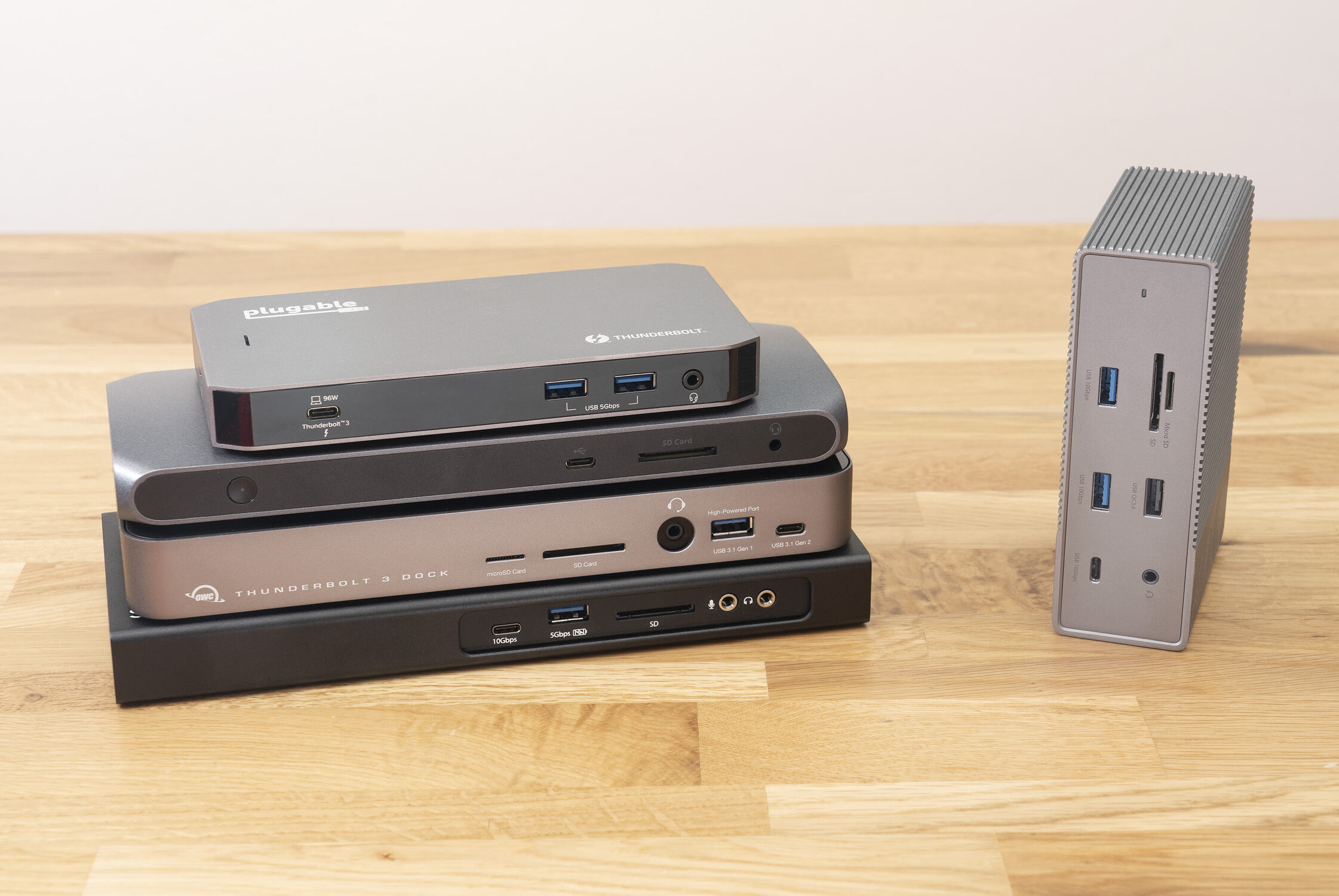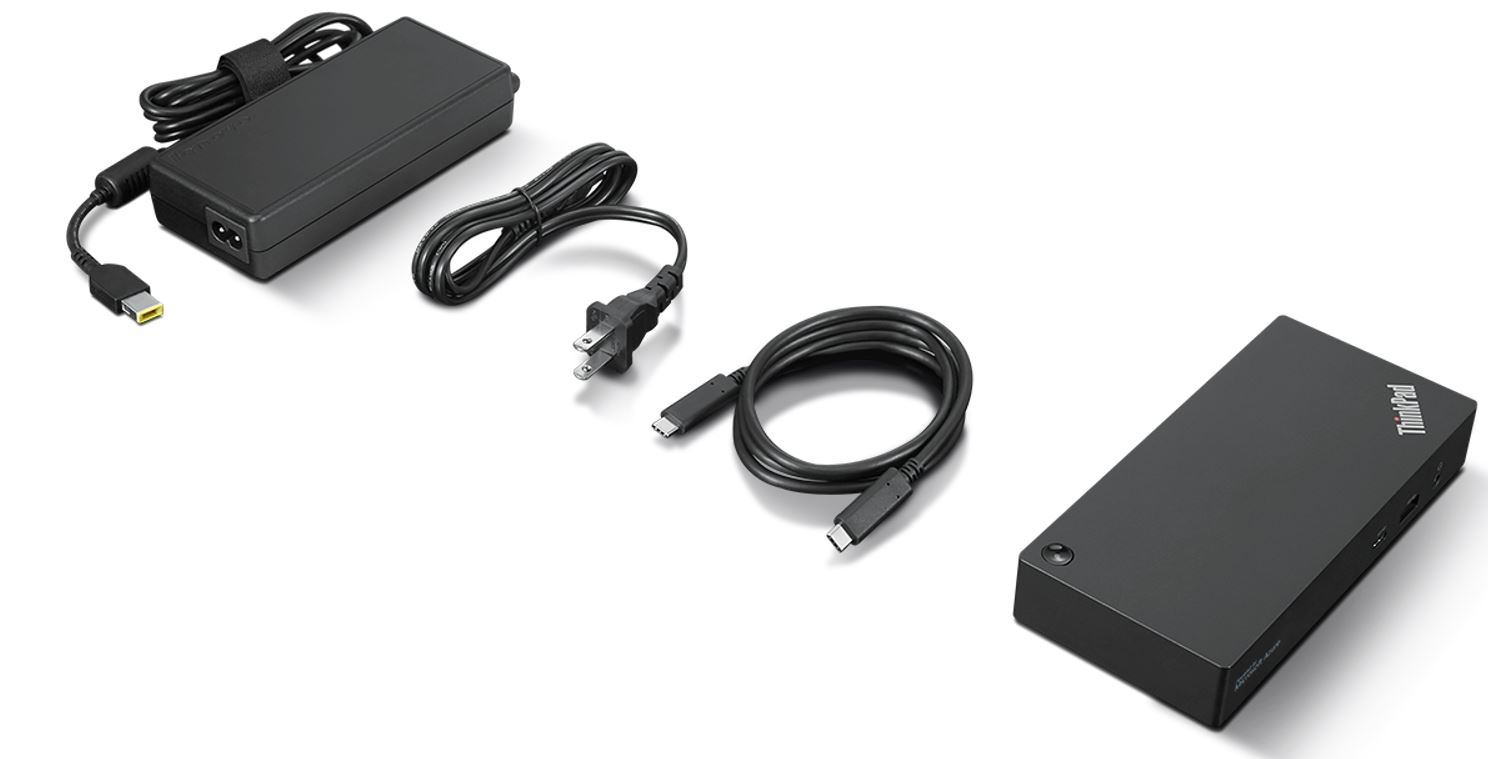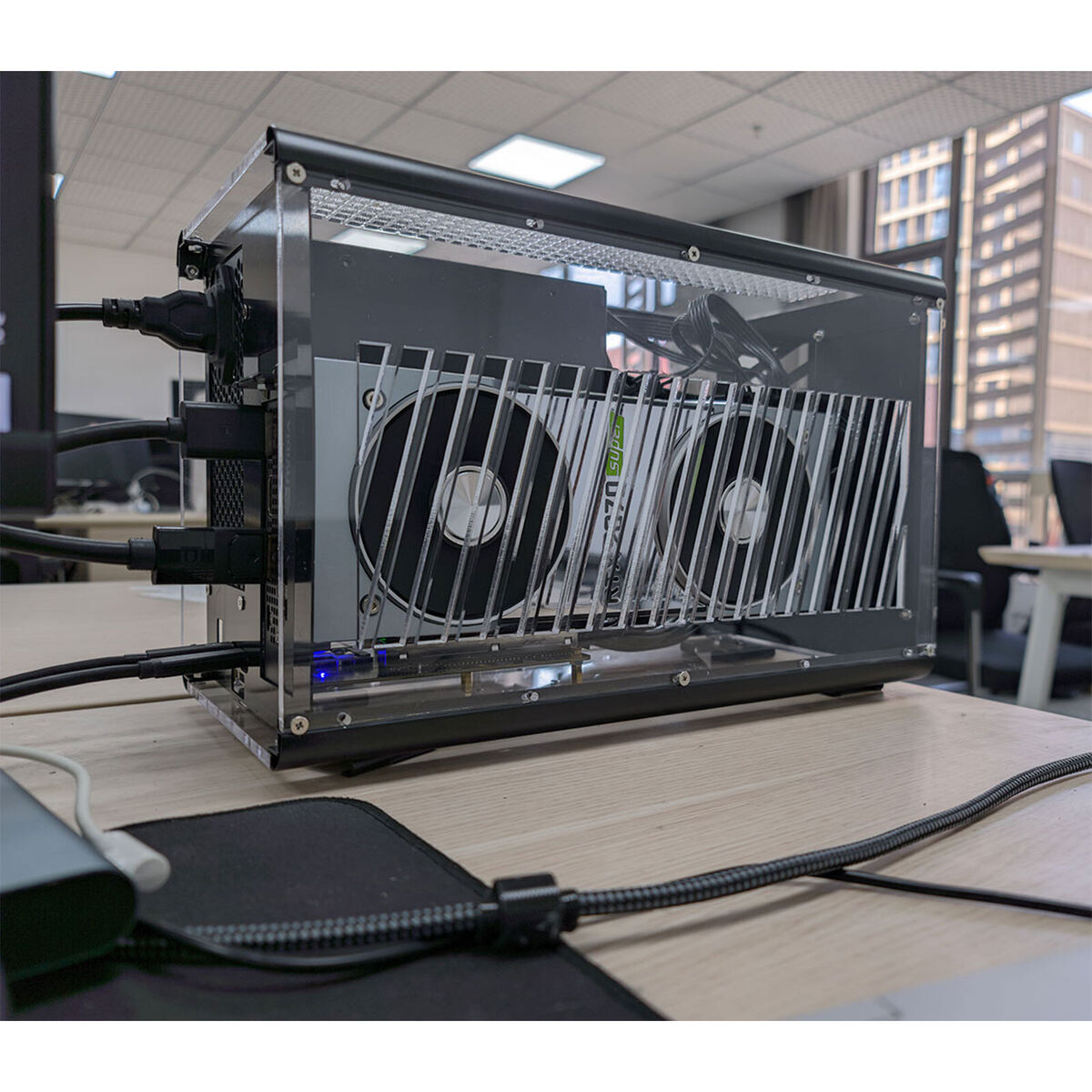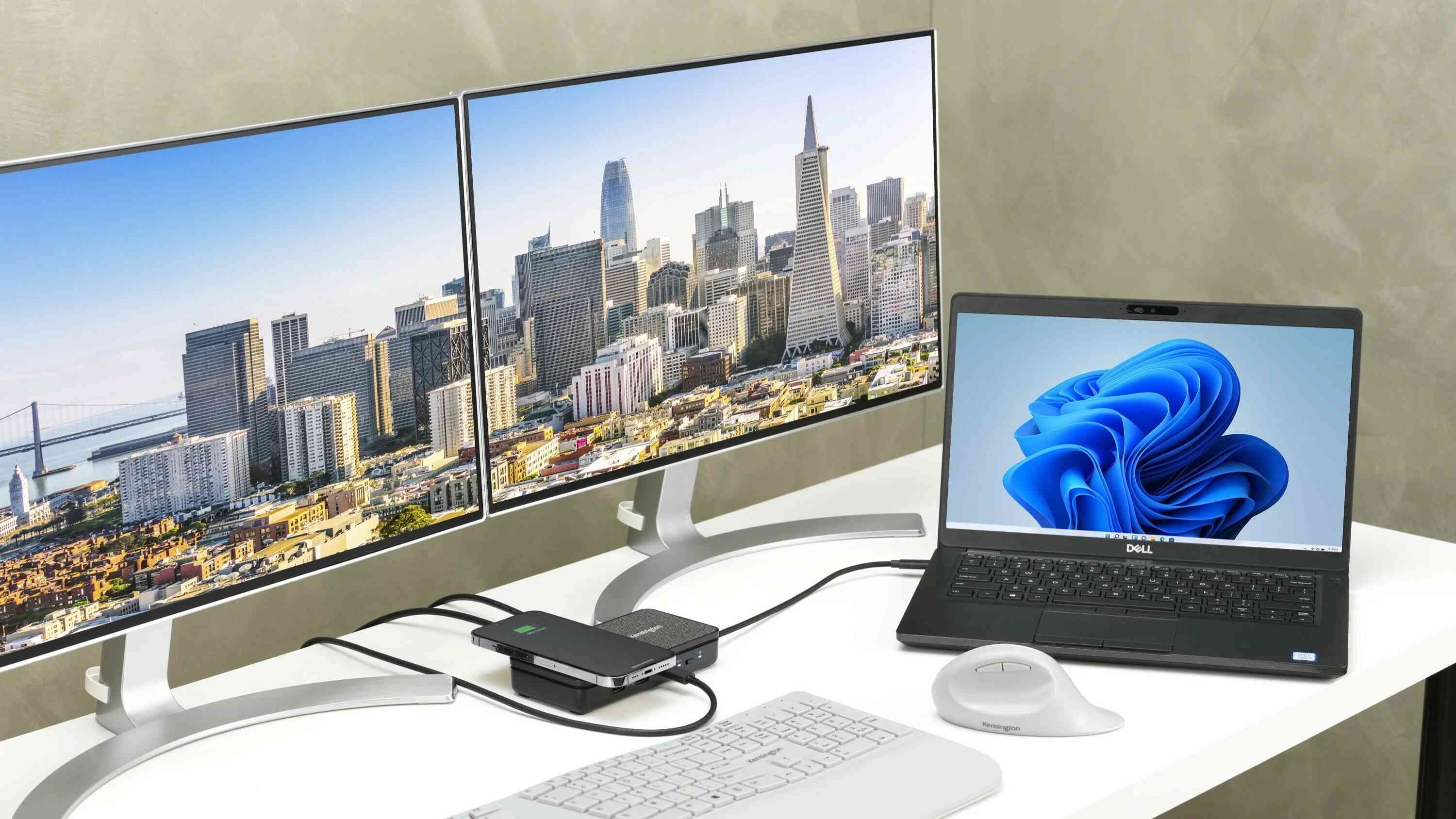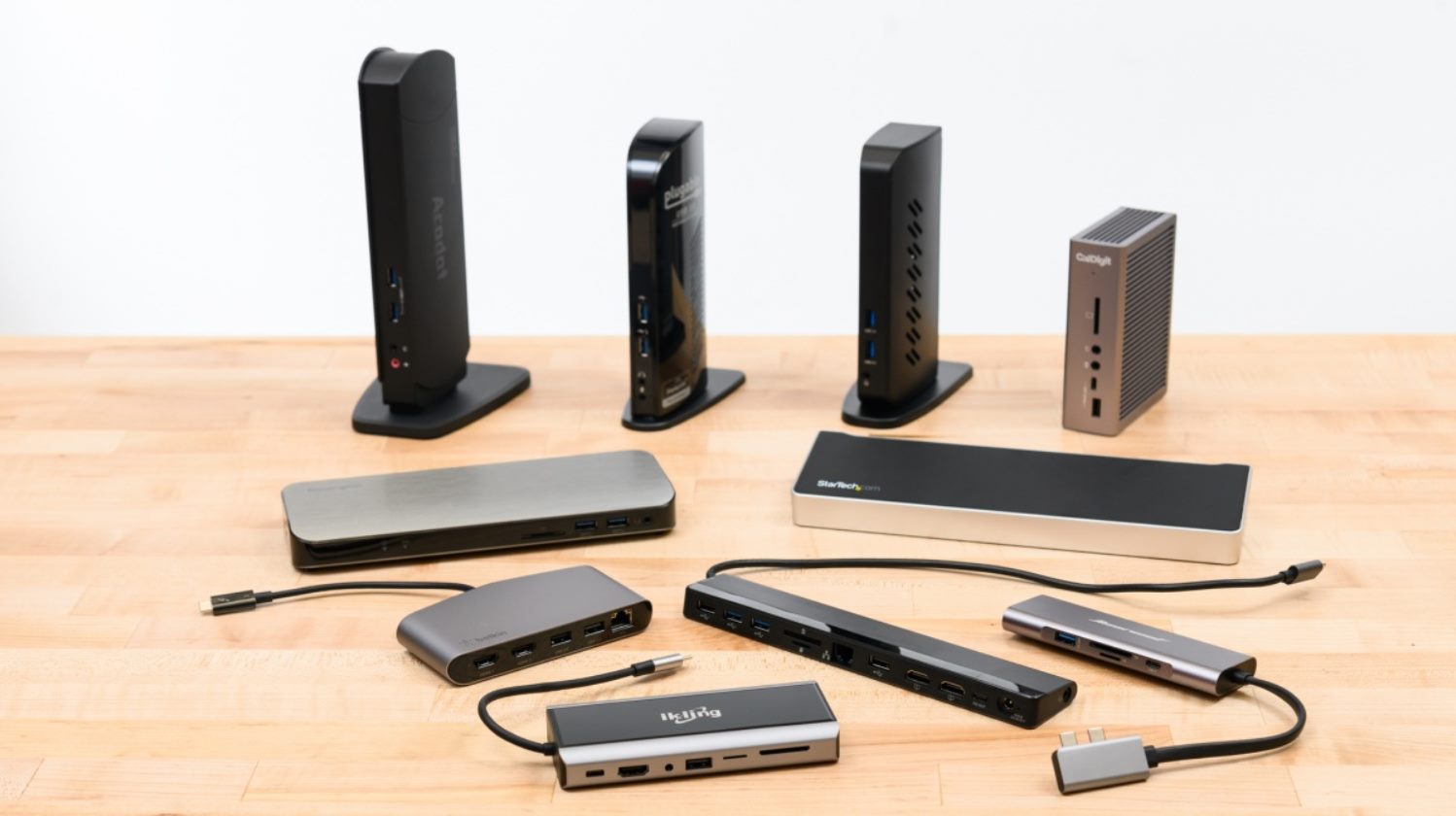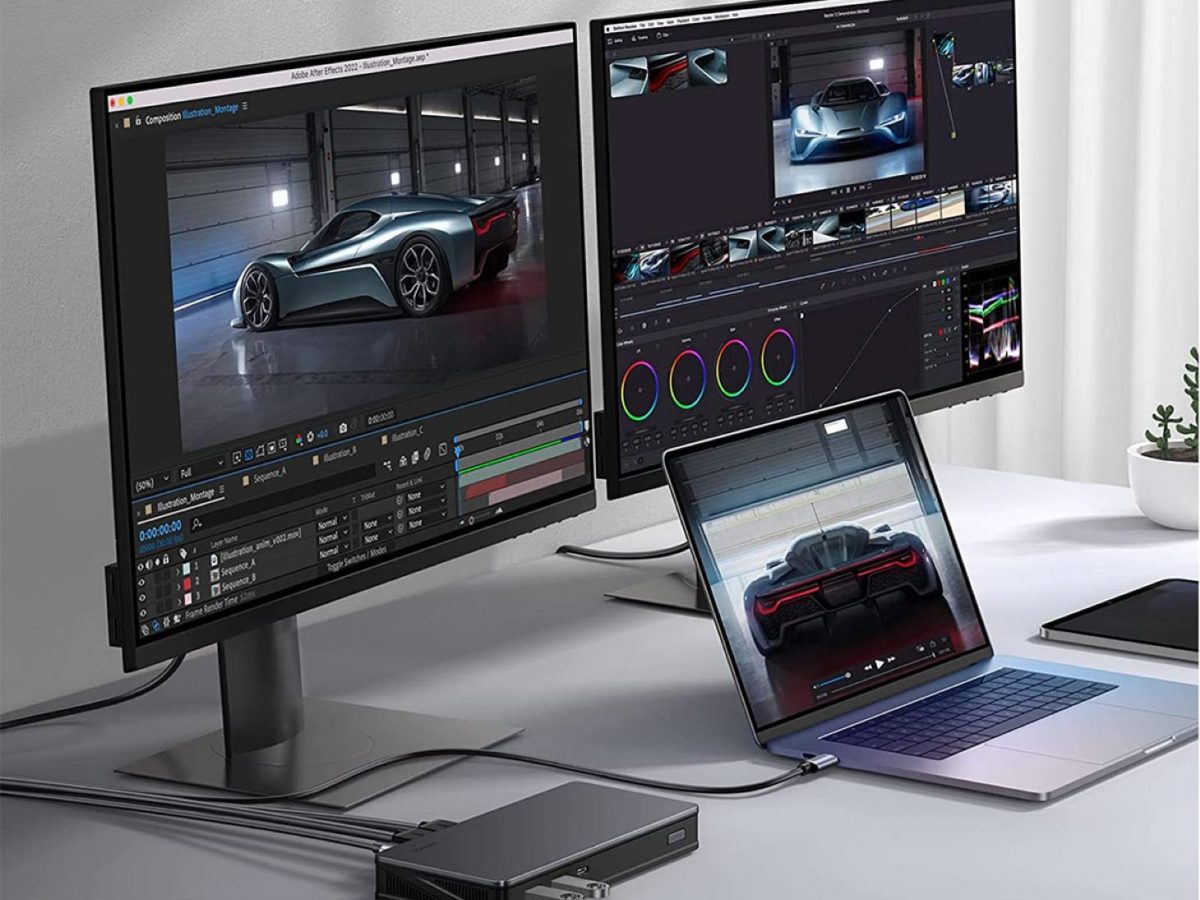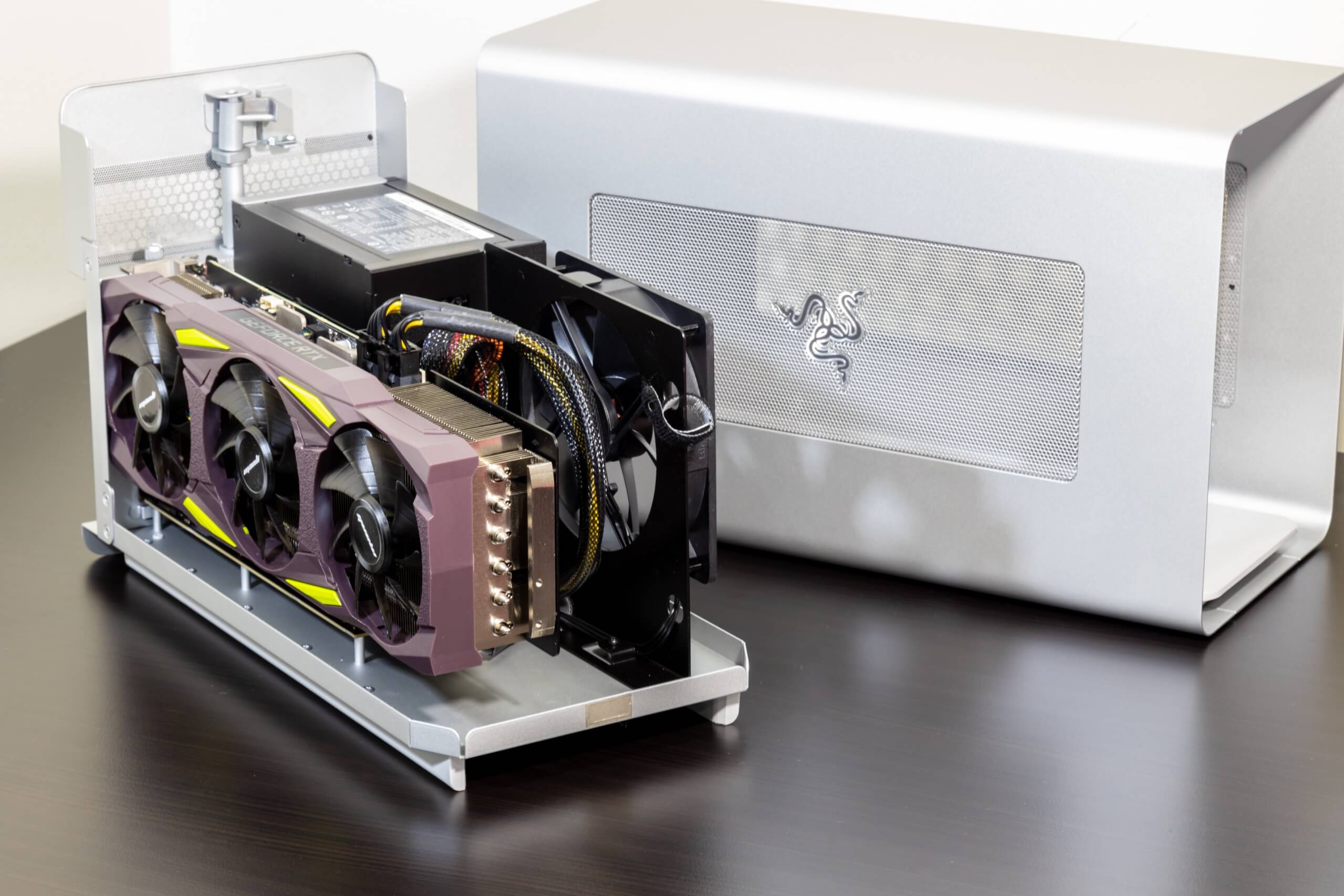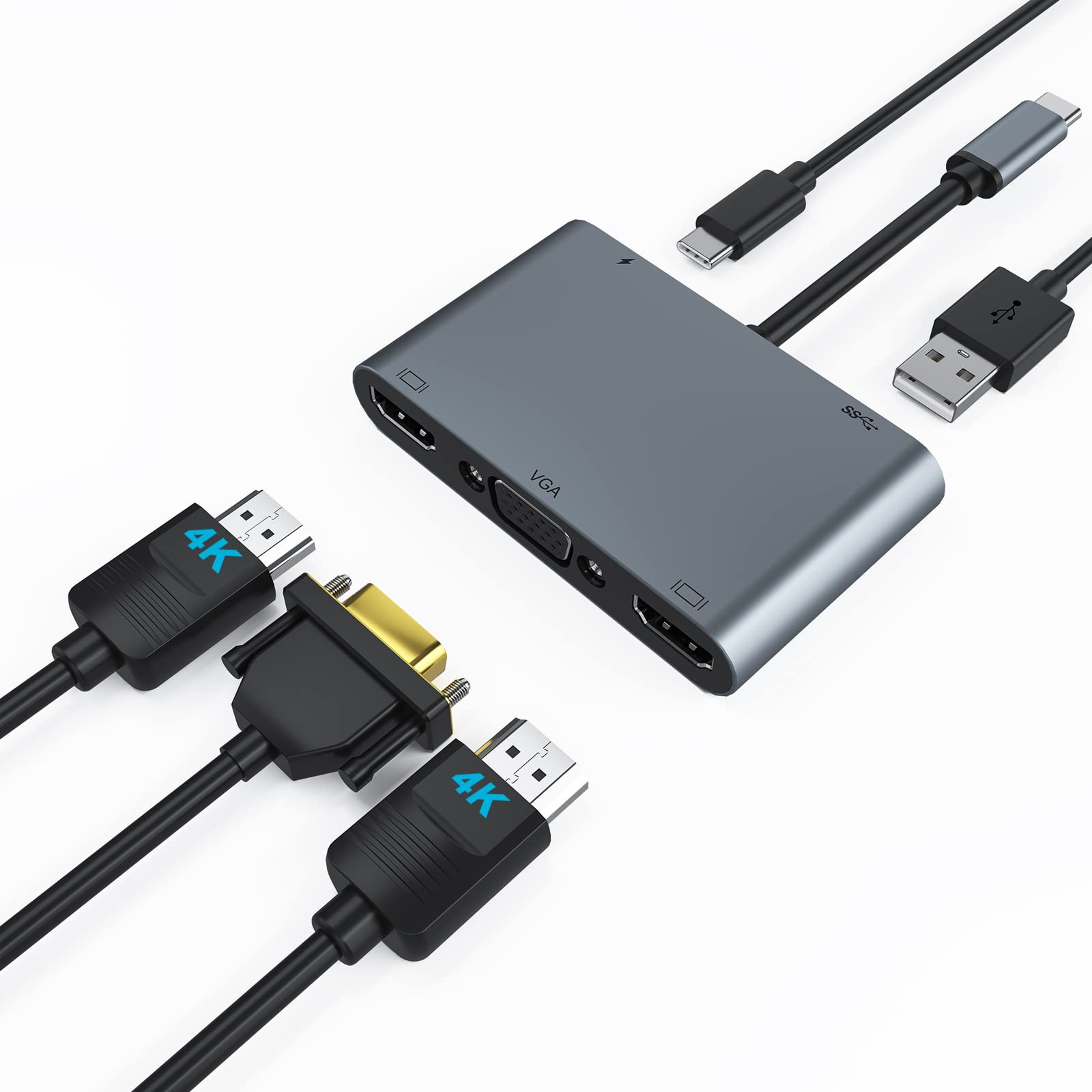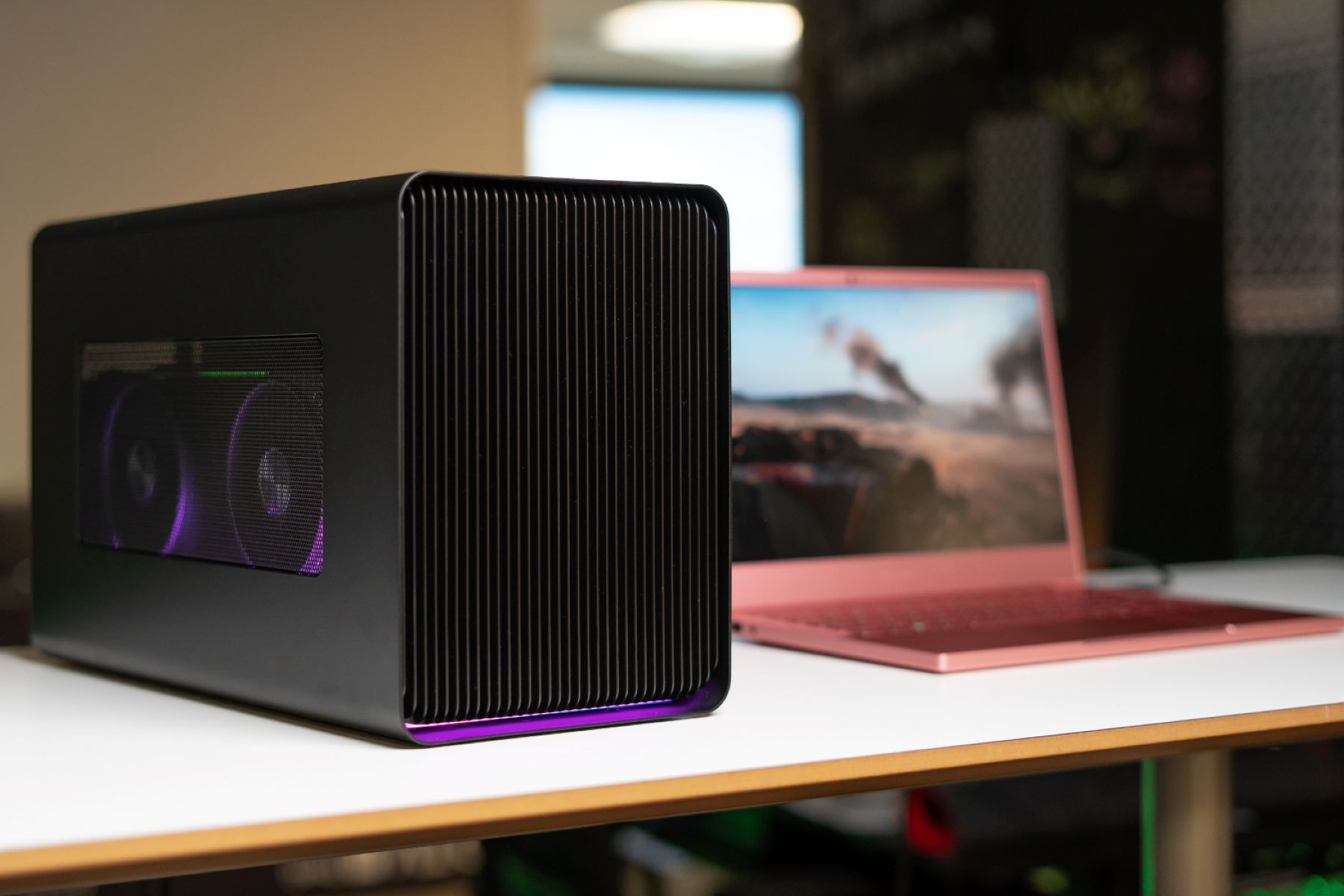Introduction
Connecting your Lenovo laptop to a Thunderbolt Dock 3 can greatly enhance your productivity and expand your connectivity options. The Thunderbolt Dock 3 provides a wide range of features, including multiple USB ports, HDMI output, Ethernet connectivity, and more. However, getting your Lenovo laptop to connect successfully with the Thunderbolt Dock 3 is not always a straightforward process.
In this article, we will provide you with a step-by-step guide on how to get your Lenovo laptop to connect to a Thunderbolt Dock 3. We will discuss various troubleshooting steps, including checking compatibility, cable connections, firmware and driver updates, BIOS settings, and more. By following these steps, you can overcome common hurdles and ensure a seamless connection between your Lenovo laptop and the Thunderbolt Dock 3.
Before diving into the troubleshooting steps, it’s important to note that Thunderbolt technology is not available on all Lenovo laptop models. Therefore, it is essential to check the compatibility of your laptop with Thunderbolt Dock 3. Additionally, it is crucial to ensure that you have the necessary cables and adapters for a successful connection.
Now, let’s move on to the troubleshooting steps to help you get your Lenovo laptop connected to a Thunderbolt Dock 3.
Checking the Compatibility
The first step in getting your Lenovo laptop to connect to a Thunderbolt Dock 3 is to check the compatibility of your laptop with Thunderbolt technology. Not all Lenovo laptop models support Thunderbolt, so it’s crucial to ensure that your laptop has the required hardware and software capabilities.
To determine the compatibility of your Lenovo laptop, you can start by checking the laptop’s specifications. Look for any mention of Thunderbolt ports or Thunderbolt support in the product documentation or specifications provided by Lenovo. If you’re unable to find this information, you can visit the Lenovo support website or contact customer support for assistance.
It’s worth noting that even if your Lenovo laptop has a Thunderbolt port, it might require additional software or firmware updates to ensure compatibility with the Thunderbolt Dock 3. Check the Lenovo support website for any available Thunderbolt firmware or driver updates specific to your laptop model.
Another consideration for compatibility is the version of Thunderbolt supported by your Lenovo laptop and the Thunderbolt Dock 3. Thunderbolt technology has evolved over the years, with different versions offering varying levels of performance and features. Make sure that your laptop and the Thunderbolt Dock 3 are compatible in terms of Thunderbolt version.
If your Lenovo laptop is not compatible with Thunderbolt technology, you may explore alternative docking solutions that are compatible with your laptop’s connectivity options.
By checking the compatibility of your Lenovo laptop with Thunderbolt technology, you can ensure that you have the necessary hardware and software support to establish a successful connection with the Thunderbolt Dock 3.
Checking the Cable Connections
Once you have confirmed the compatibility of your Lenovo laptop with Thunderbolt technology, the next step is to check the cable connections between your laptop and the Thunderbolt Dock 3. Faulty or loose cable connections can prevent the proper functioning of the dock and hinder the connection between the laptop and dock.
Start by ensuring that all cables are securely connected to their respective ports. Check both ends of the Thunderbolt cable, making sure it is firmly plugged into the Thunderbolt port of your laptop and the Thunderbolt port on the Thunderbolt Dock 3. If your laptop has multiple Thunderbolt ports, ensure that you are connecting the cable to the correct port recommended for docking.
Inspect the Thunderbolt cable for any signs of damage such as cuts, fraying, or bent pins. If you notice any physical damage, it is advisable to replace the cable with a new one. A faulty cable can lead to connection problems and unreliable performance.
In addition to the Thunderbolt cable, also check the power adapter cable of the Thunderbolt Dock 3. Make sure it is securely connected to a power outlet and the dock itself. The power adapter is essential to provide power to the dock and enable proper functionality.
Moreover, if you are using any additional adapters or converters to connect your Lenovo laptop to the Thunderbolt Dock 3, verify that they are compatible and functioning correctly. Some adapters may require specific driver installations or firmware updates to work seamlessly with Thunderbolt technology.
By thoroughly checking the cable connections and ensuring their proper functioning, you can eliminate any potential issues related to loose connections or damaged cables that may hinder the successful connection between your Lenovo laptop and the Thunderbolt Dock 3.
Updating Thunderbolt Firmware
Updating the Thunderbolt firmware on your Lenovo laptop is an important step to ensure compatibility and optimal performance when connecting to a Thunderbolt Dock 3. Firmware updates often contain bug fixes, security enhancements, and improvements in Thunderbolt functionality.
To update the Thunderbolt firmware on your Lenovo laptop, follow these steps:
- Visit the official Lenovo support website and navigate to the Drivers & Software section.
- Enter the model number or name of your Lenovo laptop in the search bar to find the appropriate drivers and firmware updates.
- Locate the Thunderbolt firmware update specifically designed for your laptop model and operating system.
- Download the firmware update file and save it to a convenient location on your laptop.
- Close all running applications and double-click the firmware update file to start the installation process.
- Follow the on-screen instructions provided by the firmware update tool to complete the installation.
- Restart your Lenovo laptop to allow the firmware update to take effect.
It is essential to ensure that the Thunderbolt Dock 3 is connected to your Lenovo laptop during the firmware update process to update the firmware on the dock as well.
Keep in mind that firmware updates may vary depending on your laptop model and the Thunderbolt Dock 3. Therefore, it is advisable to refer to the specific instructions provided by Lenovo for your laptop and the Thunderbolt Dock 3.
Regularly checking for Thunderbolt firmware updates and keeping your laptop up to date can help resolve any compatibility issues and ensure the smooth functioning of the Thunderbolt Dock 3 with your Lenovo laptop.
Updating Device Drivers
Alongside updating the Thunderbolt firmware, it is crucial to ensure that the device drivers on your Lenovo laptop are up to date. Device drivers act as intermediaries between the operating system and the hardware components, enabling smooth communication and proper functioning.
Here’s how you can update the device drivers on your Lenovo laptop:
- Visit the official Lenovo support website and navigate to the Drivers & Software section.
- Enter the model number or name of your Lenovo laptop in the search bar to find the appropriate drivers for your specific laptop model.
- Locate the driver updates related to Thunderbolt technology or the specific hardware components associated with the Thunderbolt Dock 3.
- Download the driver update files and save them to a convenient location on your laptop.
- Double-click the driver update files to start the installation process.
- Follow the on-screen instructions provided by the driver installer to complete the installation.
- Restart your Lenovo laptop to allow the driver updates to take effect.
Ensure that you update drivers related to your Thunderbolt port, USB controllers, networking adapters, and any other components that may affect the connectivity and performance of the Thunderbolt Dock 3.
In addition to updating drivers provided by Lenovo, it is also advisable to check for driver updates directly from the manufacturers of the associated hardware components. This can include Intel for Thunderbolt controllers, Realtek for audio, and NVIDIA or AMD for graphics drivers, depending on your laptop configuration.
Regularly checking and updating device drivers can help ensure compatibility, proper functioning, and optimal performance when connecting your Lenovo laptop to the Thunderbolt Dock 3.
Disabling Thunderbolt Security
In some cases, the Thunderbolt security settings on your Lenovo laptop can interfere with the connection between your laptop and the Thunderbolt Dock 3. Disabling Thunderbolt security can help resolve compatibility issues and allow for seamless communication between the devices.
To disable Thunderbolt security on your Lenovo laptop, follow these steps:
- Restart your laptop and enter the BIOS/UEFI settings by pressing the designated key during startup (usually Del or F2).
- Navigate to the “Security” or “Advanced” section in the BIOS/UEFI settings menu.
- Look for options related to Thunderbolt security, such as “Thunderbolt Security Level” or “Security Mode”.
- Set the Thunderbolt security level to the lowest or least restrictive option available.
- Save the changes and exit the BIOS/UEFI settings.
Disabling Thunderbolt security may vary depending on your specific laptop model and BIOS/UEFI version. Therefore, it is essential to refer to the user manual or support documentation provided by Lenovo for detailed instructions.
Remember that disabling Thunderbolt security may have security implications, as it allows for potentially unauthorized devices to connect to your laptop’s Thunderbolt port. It is essential to weigh the benefits and risks before making this change.
By disabling Thunderbolt security, you can remove any barriers that may be preventing the successful connection between your Lenovo laptop and the Thunderbolt Dock 3.
Configuring BIOS Settings
In some cases, configuring the BIOS settings on your Lenovo laptop can help establish a stable connection between your laptop and the Thunderbolt Dock 3. The BIOS (Basic Input/Output System) contains essential settings that control various hardware and system functionalities.
To configure the BIOS settings for optimal Thunderbolt connectivity, follow these steps:
- Restart your laptop and enter the BIOS/UEFI settings by pressing the designated key during startup (usually Del or F2).
- Navigate to the “Configuration” or “Advanced” section in the BIOS/UEFI settings menu.
- Look for options related to Thunderbolt or Thunderbolt security.
- Ensure that Thunderbolt support is enabled.
- Check if there are options to prioritize Thunderbolt as the primary display or boot device, if applicable.
- Adjust any Thunderbolt power settings to ensure proper power delivery to the Thunderbolt Dock 3.
- Save the changes and exit the BIOS/UEFI settings.
Configuring BIOS settings can vary depending on your specific laptop model and BIOS/UEFI version. It is advisable to refer to the user manual or support documentation provided by Lenovo for detailed instructions.
Additionally, it is recommended to keep your laptop’s BIOS/UEFI up to date by periodically checking for firmware updates on the Lenovo support website. Updated BIOS versions often include bug fixes, compatibility improvements, and enhancements that can positively impact Thunderbolt connectivity.
By configuring the BIOS settings properly, you can optimize the Thunderbolt connectivity between your Lenovo laptop and the Thunderbolt Dock 3, ensuring a seamless and stable connection.
Resetting the Thunderbolt Controller
If you are still experiencing issues with connecting your Lenovo laptop to the Thunderbolt Dock 3, resetting the Thunderbolt controller can be a helpful troubleshooting step. Resetting the Thunderbolt controller can resolve any software conflicts or glitches that might be hindering the connection.
To reset the Thunderbolt controller on your Lenovo laptop, follow these steps:
- Disconnect the Thunderbolt cable from both your laptop and the Thunderbolt Dock 3.
- Close all running applications on your laptop.
- Press and hold the power button on your laptop for about 10 seconds until it completely powers down.
- Disconnect the power adapter from your laptop.
- Press and hold the power button again for about 10 seconds to drain any residual power.
- Reconnect the power adapter to your laptop.
- Power on your laptop and wait for it to boot up.
- Reconnect the Thunderbolt cable to both your laptop and the Thunderbolt Dock 3.
After performing the above steps, the Thunderbolt controller should be reset, and you can attempt to connect your Lenovo laptop to the Thunderbolt Dock 3 again.
If resetting the Thunderbolt controller does not resolve the issue, it is advisable to reach out to Lenovo support for further assistance or consider contacting the manufacturer of the Thunderbolt Dock 3 for troubleshooting steps specific to their device.
Resetting the Thunderbolt controller can help resolve connectivity issues and ensure a fresh start for the Thunderbolt connection between your Lenovo laptop and the Thunderbolt Dock 3.
Troubleshooting Tips
If you are still facing difficulties in getting your Lenovo laptop to connect to the Thunderbolt Dock 3, here are some additional troubleshooting tips that can help you resolve the issue:
- Try a different Thunderbolt cable: Sometimes, the Thunderbolt cable itself may be faulty or not fully compatible. Try using a different Thunderbolt cable to see if that resolves the issue.
- Check for updated firmware and drivers: Ensure that you have the latest Thunderbolt firmware and device drivers installed on your Lenovo laptop. Visit the Lenovo support website and download any available updates specific to Thunderbolt technology.
- Update your laptop’s operating system: Keeping your laptop’s operating system up to date can help resolve compatibility issues. Check for any available updates and install them accordingly.
- Disconnect and reconnect the Thunderbolt Dock 3: Unplug the Thunderbolt Dock 3 from your laptop and power source, wait for a few seconds, and then reconnect it. This can help refresh the connection and resolve any temporary issues.
- Test the Thunderbolt Dock 3 on another device: Try connecting the Thunderbolt Dock 3 to another compatible device to see if it functions properly. This can help determine if the issue is specific to your Lenovo laptop or the dock itself.
- Check for physical damage or debris: Inspect the Thunderbolt port on your laptop and the Thunderbolt connectors on the dock for any physical damage or debris. Clean them carefully if needed, ensuring a proper connection.
- Perform a system restart: Sometimes, a simple system restart can resolve minor software glitches or conflicts. Restart your Lenovo laptop and try connecting it to the Thunderbolt Dock 3 again.
By following these troubleshooting tips, you can troubleshoot common issues and increase the chances of successfully connecting your Lenovo laptop to the Thunderbolt Dock 3.
Conclusion
Connecting your Lenovo laptop to a Thunderbolt Dock 3 can provide you with a versatile and powerful docking solution. However, it is important to follow the necessary steps and troubleshooting tips to ensure a seamless connection.
In this article, we discussed various steps to help you get your Lenovo laptop connected to a Thunderbolt Dock 3. We covered checking compatibility, cable connections, updating Thunderbolt firmware and device drivers, disabling Thunderbolt security, configuring BIOS settings, resetting the Thunderbolt controller, and troubleshooting tips.
Before attempting to connect your laptop to a Thunderbolt Dock 3, it is crucial to check the compatibility of your Lenovo laptop with Thunderbolt technology. Additionally, ensuring secure cable connections and updating both Thunderbolt firmware and device drivers can greatly enhance compatibility and performance.
If you encounter any issues during the connection process, troubleshooting steps such as disabling Thunderbolt security, configuring BIOS settings, resetting the Thunderbolt controller, and following troubleshooting tips can help you resolve the problem.
Remember to always refer to the specific instructions provided by Lenovo for your laptop model and the Thunderbolt Dock 3. Regularly checking for firmware updates, keeping device drivers up to date, and maintaining a clean and secure connection can help ensure a seamless and reliable connection between your Lenovo laptop and the Thunderbolt Dock 3.
By following the steps and troubleshooting tips outlined in this article, you can overcome common hurdles and enjoy the benefits of an enhanced docking experience with your Lenovo laptop and the Thunderbolt Dock 3.







